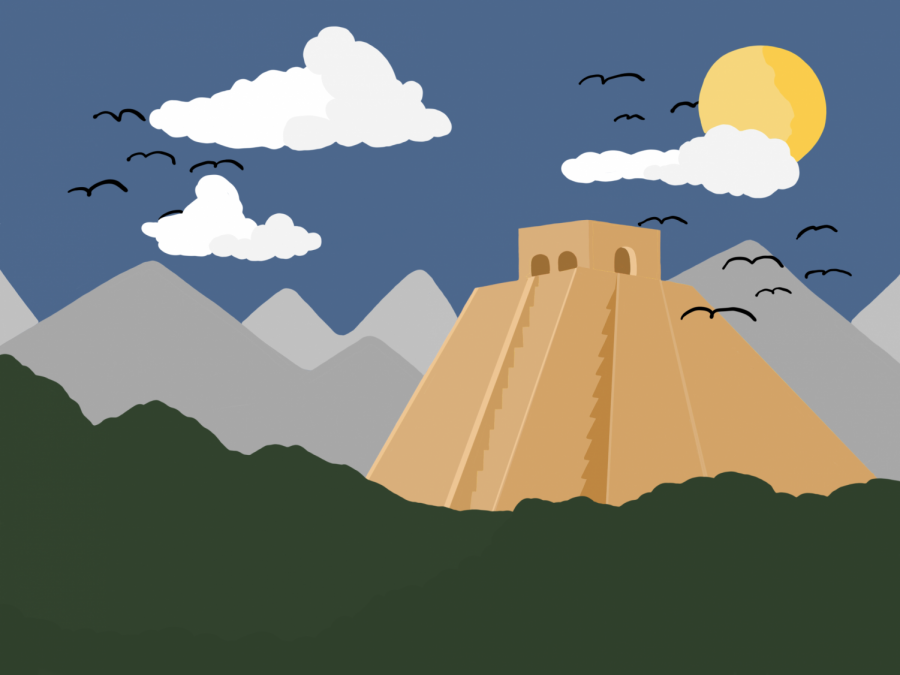How the Aztecs shaped the modern world
The Aztecs were a prominent influence on the world in which we live today.
May 9, 2020
The Aztecs dominated central Mexico from their glorious capital, Tenochtitlan (now Mexico City) since their arrival during the 13th century as a nomadic tribe in Mesoamerica. They were the most powerful native civilization at the time, which was due to their development of “an intricate social, political, religious and commercial organization.”
Following the Spanish invasion led by Hernán Cortés in the 15th century, it was only natural for the incredible influence and inventions of the Aztec way of life to spread all throughout North America and beyond. Whether it be through their architecture, law or agriculture, undertones of the Aztec civilization are visible in all parts of the world.
With their court structures and judges, the Aztecs had an incredibly sophisticated justice system. This is demonstrated in their countless laws against theft, murder and vandalizing–they also had laws enforcing temperance among the citizens. If someone were to commit a crime, they would be prosecuted and held against a court of law who would determine their guilt or innocence, and the extent of their punishment.
Ancient laws supporting temperance mirror the now repealed 18th amendment of the United States, which prohibited the consumption of alcohol. Their 13th century version of a court system with judges and different levels, leading up to a supreme court, are also visible in the Western and Northern hemispheres.
Prior to any European intervention, the Aztecs came to rule five to six million people as a result of their own imperialistic tendencies as seen with their “500 small states [that were obtained] either by conquest or commerce.” Therefore, Aztec rulers were obligated to provide a proper water supply to every citizen. They made this possible by building aqueducts throughout the land that would then cause water to “[flow] into public fountains where it was then delivered in clay pots to the workers and civilians.” They also used the aqueduct method to water botanical gardens, which mirrors similar systems today.
The Roman Empire had a similar version of aqueducts during 312 B.C. to A.D. 226 using “pipes, tunnels, canals, and bridges”. Both, however, made it possible for every person—regardless of their location—to obtain clean water.
Perhaps the most notable Aztec practice was their use of two calendars: the xiuhpohualli and the tonalpohualli. Both calendars “[reflect] the Aztec understanding of time and space.” Unlike the tonalpohualli calendar, which was used for spiritual purposes, the xiuhpohualli included a 365-day year, four seasons and numerous weeks and months.
Although there isn’t much known about when the calendars were created, it is widely known that the Gregorian calendar which was implemented in 1582, and the one the world uses today, is by far the most precise. However, this primitive, yet spectacularly accurate calendar is believed by archaeologists to have been carved into stone sometime in the late 15th century.
The Aztecs, once a driving force in southern North America, are now mostly known by us through Spanish accounts, which inevitably led to the overwhelmingly Anglo perspective of their stories and artifacts. It’s necessary to recognize that they were much more than that.
It’s not only the Aztecs; other native groups such as the Mayans, Incas and Mixtec have molded society greatly, yet modern history fails to recognize their contribution. Plenty of indigenous civilizations already had complex and intricately developed societies which were forcibly altered to fit into a more European definition. The Spanish conquistadors attempted to “civilize” people who weren’t at an ultimate need for their help, however, the indigenous influence in the modern world still prevails today, despite their original efforts.
















gyat • Feb 4, 2025 at 9:07 am
GYAT
jo • Dec 4, 2024 at 6:26 pm
thank you that was help full!!!!!!!!!!!!!!!!!!!!!!
keofjifjer • Jun 4, 2024 at 12:22 pm
Love how there is a lot of information and how specific it is. This is very helpful to me because i have to make a presentation. So thank you for creating this.
Reynaldo • May 29, 2022 at 12:57 am
Mexican government propoganda, most Mexicans aren´t even of Aztec descent. The Aztecs´ impact in Mexican history is vastly overstated, mostly by the Mexican government who would like to claim their perceived glory. The Aztecs brutally sacrificed their neighbors which led to their defeat at the hands of the Spanish and their INDIGENOUS allies. Stop with the revisionist history, the Aztecs were no better than similar European empires.
John Doe • Dec 14, 2022 at 11:00 pm
Perhaps the Spanish were the lesser evil. The Aztec tradition of sacrifice is better left 10 feet underground. I would certainly not respect such a culture that sacrifices the people it conquers.
Gabriella Renee Koszarek • Apr 4, 2022 at 10:02 am
This is a great article. I didn’t really need to read it because I just learned about them a few months ago but I like reading things about what I already learned. I can learn new things from it.
honey bun 456 • May 11, 2021 at 2:17 pm
wow! this is one of the best articles i have ever had the pleasure of reading! you are such a great writer! i bet you got into harvard with this much skill!!!!
zzz zz • Nov 11, 2022 at 3:15 am
no